#native bee
Explore tagged Tumblr posts
Text

My mason bees are waking up!
16 notes
·
View notes
Text
Oh! This is a male! The male bees like to sleep together on the one plant stem while the females make burrows to sleep in!


Source: Heard, T, A. (2016). The Australian Native Bee Book: Keeping stingless bee hives for pets, pollination and sugarbag honey. Sugarbag Bees. ISBN 978-0-646-93997-1 (paperback)
Here's also one I removed from a room a few months ago!




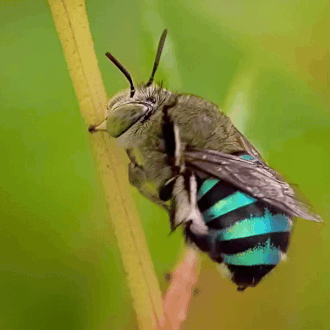

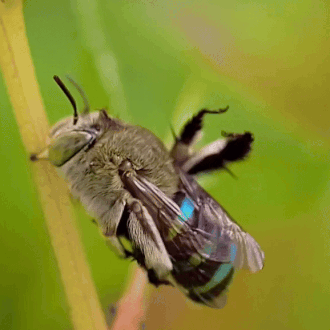
a blue-banded bee's before bed evening ritual | vishalvjadhav on ig
#gifs#Tim Heard#Amegilla cingulata#blue banded bee#australian banded bee#amegilla#digger bees#apidae#bees#hymenoptera#insects#arthropods#animal#bugs#australian wildlife#sugarbag honey#The Australian Native Bee Book: Keeping stingless bee hives forpets#pollination and sugarbag honey / Tim Heard#native bee
1K notes
·
View notes
Text
A caveat to this study: the researchers were primarily looking at insect pollinator biodiversity. Planting a few native wildflowers in your garden will not suddenly cause unusual megafauna from the surrounding hinterlands to crowd onto your porch.
That being said, this study backs up Douglas Tallamy's optimistic vision of Homegrown National Park, which calls for people in communities of all sizes to dedicate some of their yard (or porch or balcony) to native plants. This creates a patchwork of microhabitats that can support more mobile insect life and other small beings, which is particularly crucial in areas where habitat fragmentation is severe. This patchwork can create migration corridors, at least for smaller, very mobile species, between larger areas of habitat that were previously cut off from each other.
It may not seem like much to have a few pots of native flowers on your tiny little balcony compared to someone who can rewild acres of land, but it makes more of a difference than you may realize. You may just be creating a place where a pollinating insect flying by can get some nectar, or lay her eggs. Moreover, by planting native species you're showing your neighbors these plants can be just as beautiful as non-native ornamentals, and they may follow suit.
In a time when habitat loss is the single biggest cause of species endangerment and extinction, every bit of native habitat restored makes a difference.
#nature#wildlife#animals#ecology#environment#conservation#science#scicomm#pollinators#bees#butterflies#hoverflies#insects#native plants#habitat restoration#solarpunk#hopepunk#naturecore#wildflowers#good news
3K notes
·
View notes
Text
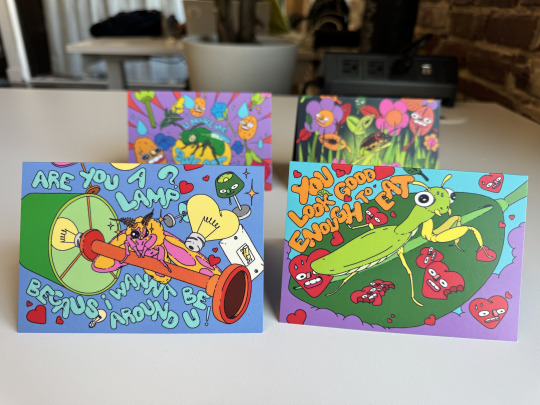
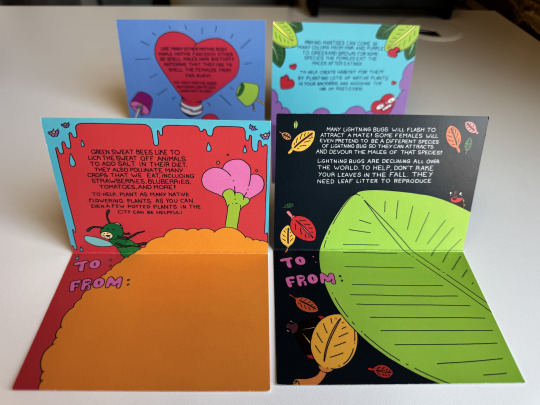
Inject a little science into your Valentines Day with LOVE BUGS valentines!
GET 'EM HERE!
I really love putting science into things people are already doing. Each of these cards has a fact about the animal AND something you can do to HELP the animal. Let's care for our native insects! We love biodiversity!
(I also love getting snail mail. It's just a delight.)
Send these with your kid to school for valentines day exchanges, send them to your friends, bring them to work to bring a little joy (and science!) to the office.
They were designed by Michele Scott in Philly, and printed & packed here at Skype a Scientist HQ (also in Philly).
All sales support science education nonprofit Skype a Scientist!
Tell your friends. Get some Love bugs.
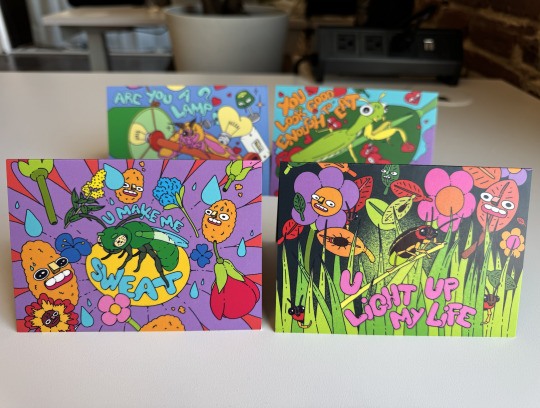
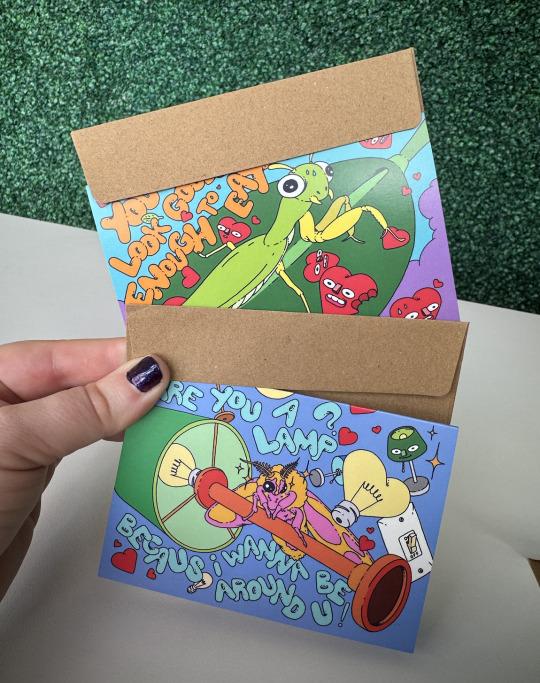
#squid facts#Science#Skype a Scientist#Love bugs#valentines#valentines day#insects#biodiversity#bugs#mantis#rosy maple moth#lightning bug#firefly#Sweat bee#native bugs
2K notes
·
View notes
Text

4K notes
·
View notes
Text

Rosa cv. with native bee
08-JAN-2023
Melbourne, Vic
#australia#victoria#melbourne#flower#white#white flower#rose#white rose#rosids#rosales#rosaceae#rosoideae#roseae#rosa#australian natives#native fauna#native bee#insect#arthropod#bug#invertebrates#arthropoda#insecta#hymenoptera#apidae
0 notes
Text
Though there can be many negative impacts of honeybees on the landscape in North America: honeybees are not going anywhere and beekeepers are some of the most powerful allies in the fight against insecticides and herbicides. Right now we NEED honeybees to pollinate our crops. Eventually we should move towards requiring native hedgerows to reduce our reliance on honeybee shipments...not only will this be cheaper for farmers in the future, it will help reduce the amount of insect diseases that are spread by honeybees. (As the bees are shipped all over the continent) However, honey is always going to be something people want. The important thing for beekeepers to keep in mind, is making sure there are not too many hives per square mile! A single hive is 15,000-50,000 additional mouths to feed in an area that may already have limited pollen resources for native bees. (Who are often solitary) Responsible bee keepers can improve the impact their hives have by learning how many hives are in an area, planting abundant native flower resources on whatever land they manage, and taking feral hives out of the ecosystem rather than propagate new hives from scratch, or buying queens from retailers. People who keep honeybees are not bad people for loving honeybees! Honeybees are fascinating animals and often act as ambassadors to the beauty of the insect world. There are many ways we can and do work together to mitigate harm on all insects!
2K notes
·
View notes
Text

🪻🌱🐝 💜 🌿 ✨ // violets & violet miner bees // part of my natives + pollinators series // gouache on paper
tiny violet miner bees (Andrena violae) are a specific pollinator: they pollinate wood & dog violets in the Northeast, and show a strong preference for blue violets. letting your grassy yard rewild itself and grow violets every spring not only lets you make violet syrup, it also gives violet miner bees their most important food source and increases local pollinator diversity.
#my art#gouache#illustration#painting#art#cottagecore#artists on tumblr#botanical#spring#violet#pollinator#pollinators#native wildflowers#native plants#eco lawn#botanical illustration#violet miner bee#bees#cw: insects#insects
1K notes
·
View notes
Text
"Next Monday [6/17/24] is the start of National Pollinator Awareness Week, and one Colorado advocacy group is hosting a flower planting drive to rewild Colorado’s meadows, gardens, and just maybe, its children too.
Created by constitutional amendment in 1992, Great Outdoors Colorado (GOCO) is a state-funded independent board that invests a portion of Colorado Lottery proceeds to help preserve and enhance the state’s parks, trails, wildlife, rivers, and open spaces.
This year, GOCO’s offshoot Generation Wild is distributing over 100,000 free packets of wildflower seeds to collection points at museums, Denver Parks and Rec. offices, and libraries all over the state to encourage kids and families to plant the seeds in their backyards.
The Save the Bees! initiative aims to make the state more beautiful, more ecologically diverse, and more friendly to pollinators.
According to a new report from the Colorado Department of Natural Resources, 20% of Colorado’s bumblebees are now at risk of extinction. Even in a small area like a backyard, planting wildflowers can make a positive impact on the local ecosystem and provide native bees with a healthy place to live.
“The Western Bumblebee population has declined in Colorado by 72%, and we’re calling on kids across Colorado to ‘bee’ the change,” said GOCO Executive Director Jackie Miller.

Named after Generation Wild’s official mascot “Wilder,” the Wilderflower Seed Mix was developed in partnership with Applewood Seed Co. and packets are now available for pickup at designated partner sites including more than 80 Little Free Library boxes.
By distributing 100,000 Wilderflower packets, Generation Wild is providing more than 56 million seeds for planting in every nook and cranny of the state. All seeds are regionally-native to Colorado, which is important for sustaining the living landscape of bees, birds, and other animals.
Additionally, by using flower species adapted to the Mile High climate, landscapers and gardeners need to use less water than if they were tending non-native plants.
“Applewood Seed Co. was excited to jump in and help Generation Wild identify a seed mix that is native to the Colorado region and the American West, containing a diversity of flower species to attract and support Colorado’s pollinator populations,” stated Norm Poppe, CEO of Applewood Seed Co. “We hope efforts like this continue to educate the public on pollinator conservation and the need to protect our native bees and butterflies.”
Concluding her statement Miller firmly stated that children grow up better outside, and if you or a parent you know agree with her, all the information on how to participate in Save the Bees! can be found here on their website, including a map showing all the local pickup points for the Wilderflower Seed Packets."
-via Good News Network, June 13, 2024
#wildflowers#wild flowers#colorado#bees#native bees#entomology#insects#save the bees#pollinators#bumblebees#bumble bee#i love bees#biodiversity#native plants#urban gardening#gardening#ecology#conservation#endangered species#wildlife conservation#enviromentalism#good news#hope#hope posting#solarpunk#denver#boulder colorado#colorado springs#libraries#public libraries
487 notes
·
View notes
Text
If you're in the U.S. and want to support local plants and pollinators, I hope you've heard of the Xerces Society. Weird name, but super cool resource for gardening for insect pollinators (and they work for other invertebrate species, too)
They've got regional native plant lists:
They've also got super helpful things in their resources section, including Washington's plan for helping bumble bees:
Another really cool resource is the National Wildlife Federation's list of key stone plant species by ecoregion:
3K notes
·
View notes
Text

Native bee on a chive blossom.
3 notes
·
View notes
Text
Animal stamps
These are free to use wherever you want (giving me credit somewhere would be nice obviously)









I am planning on posting more so here's a masterpost so I can keep them all in one place
#Ideally I would have a neocities to put these on but I do not yet#Yes the native bee one is a slightly different size sorryyyyy#Web stamps#Web graphics#Neocities#Y2K#Animals#Animal art#Pixel art#Wasps#Bees#Insects#Radiodont#Parasites
566 notes
·
View notes
Text


Our Better Nature: Put the Brakes on Honey Bees – Our Future Depends on It
Honey bees are causing grave – and in some cases irreversible – harm to the environment.
In addition to being a reliable source of honey, not to mention personal satisfaction, backyard beekeeping can be a rich learning experience for the whole family. And yet at the same time, honey bees are causing grave – and in some cases irreversible – harm to the environment. It’s imperative that beekeepers learn about the threats to native pollinators posed by honey bees and actively work to mitigate the damage as much as possible. Just to be clear, honey bees are an invasive species whose population is burgeoning. They certainly don’t need our help to survive. It’s true they’re vital to industrial-scale agriculture like California’s almond farms, which are the largest in the world, and Florida’s citrus groves. Although honey bees are relatively poor pollinators, they’re the only one that can be transported in great numbers. Outside of the vast, sterile plantations of Big Ag, honey bees don’t measurably boost pollination rates, according to a multi-year Cornell University study. Led by Dr. Scott McArt, a bee specialist at Cornell’s Dyce Lab for Honey Bee Studies, the team concluded honey bees had an insignificant effect on pollination in nearly all of New York State’s apple orchards studied. The 110 species of wild bees the researchers cataloged on apple blossoms did the real work...
Read more:
https://www.saturdayeveningpost.com/2024/05/our-better-nature-put-the-brakes-on-honey-bees-our-future-depends-on-it
228 notes
·
View notes
Text
Bumblebee friend
177 notes
·
View notes
Text

BEES
This will be available as a print on my shop within the next couple weeks. Working on a full shop update.
Edit: PRINT AVAILABLE NOW
#these are all bees native to Michigan btw#the little mason bee is my favorite#bees#save the bees#native ones#honey bees don’t need saving#seriously#they are doing just fine#and they’re taking resources from native bees#I love them too but#native bees#native pollinators#bugblr#insects#bugs#bumblebee#bug art#my art#kawaii style#small artist#artists on tumblr#digital art#beeblr#bee art
169 notes
·
View notes
Text


3rd full year of "killing the lawn" is going well
75 notes
·
View notes